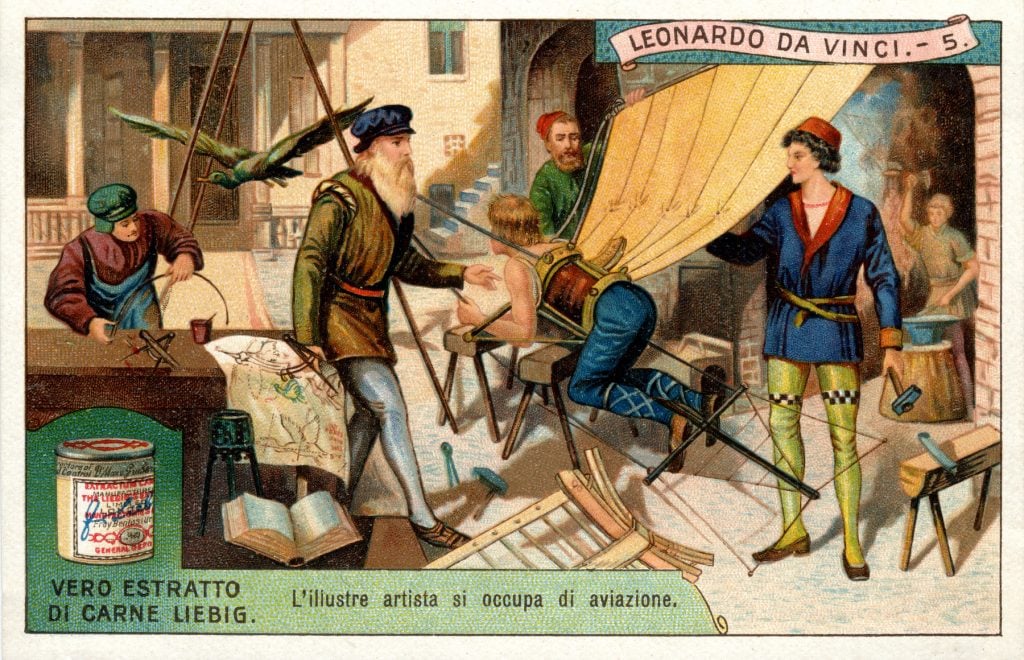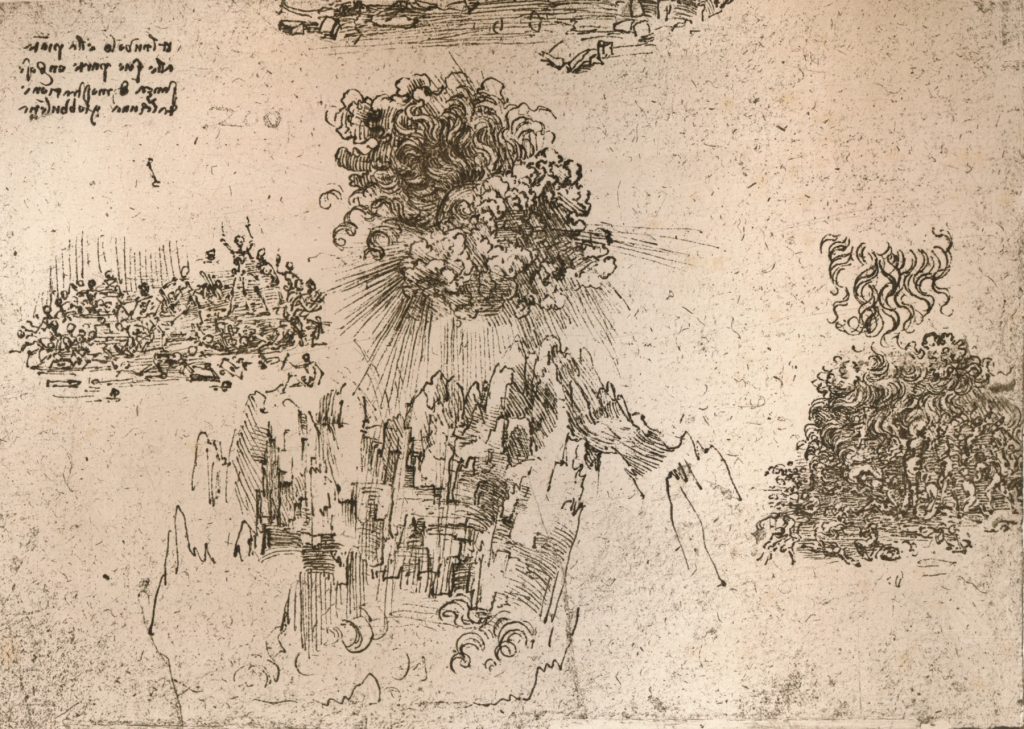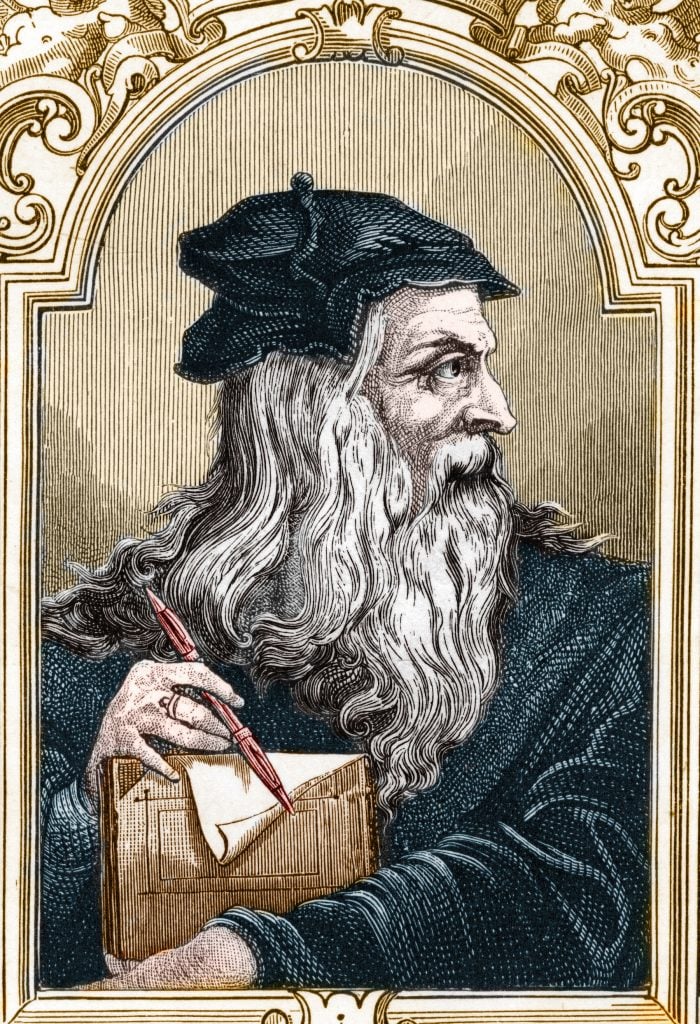Art World
Can You Solve These 10 Fun Riddles That Leonardo da Vinci Included in His ‘Prophesies’? (They Are Solvable, and We Have the Answers)
"Happy will they be who lend ear to the words of the Dead," reads one.

"Happy will they be who lend ear to the words of the Dead," reads one.

Ben Davis

When you hear the name Leonardo, you may think of The Last Supper or the Mona Lisa. Or you might think of the detailed studies of human anatomy that led to the drawing known as the Vitruvian Man. Or you may be amused and impressed by his many inventions, such as the “aerial screw”—his proto-helicopter.
All this is wonderful, if well-trod, territory. So for a lesser-known delight, it’s worth looking to Leonardo’s Notebooks, and in particular his mind puzzles.
“Puzzles” isn’t quite the right word. Officially, they are called “Prophecies.” Scholars are not sure what, exactly, this section of Leonardo’s writing was all about. I’ve read it speculated that they were written to entertain the Milanese court.
If you come upon them, what you will read is what sounds very much like a Nostradamus-like vision, a gallery of ominous signs and portents. Thus, in one line, Leonardo will write of what sounds like a sign of the End of Days: “A great part of the sea will fly towards heaven and for a long time will not return.”
But then he will note this beside it: “(That is, in Clouds.)”
Another “prophecy” sounds like a Biblical plague striking: “Many persons puffing out a breath with too much haste, will thereby lose their sight, and soon after all consciousness.”
Beside it, Leonardo writes this: “(Of putting out the Light when going to Bed.)”

Representation of natural phenomena, from The Literary Works of Leonardo Da Vinci, Vol. 1 by Jean Paul Richter. Photo by The Print Collector/Getty Images.
I like that Leonardo’s “Prophecies” can be read in a number of different ways. They make fun of superstition, as if to say that much of what is traded as miraculous can find a rational explanation. On the other hand, they brim with an appreciation for how the everyday actually seems full of magic, if you know how to look. They have a kind of optimism, dispersing signs of doom into word play. I like to think that they show that part of Leonardo’s intelligence came from a sense of humor.
I’m not totally sure if the “Prophecies” were meant to be read as one long piece, in order, or as a bunch of individual riddles to be popped out for the proper occasion. In any case, some have references to things that are obscure today, some are better than others, and some don’t quite make sense at all (it was a notebook, after all!).
So, I’ve taken the liberty of pulling out 10 of my favorites and reassembling them into one concentrated Renaissance Revelation, for your decoding pleasure.
(Leonardo’s answers/explanations are after the break.)
- Happy will they be who lend ear to the words of the Dead.
- Feathers will raise men, as they do birds, towards heaven
- The Forests will bring forth young which will be the cause of their death.
- Food shall be taken out of the mouth of many.
- Men will deal bitter blows to that which is the cause of their life.
- Men will come out their graves turned into flying creatures; and they will attack other men, taking their food from their very hand or table.
- The bones of the Dead will be seen to govern the fortunes of him who moves them.
- The skins of animals will rouse men from their silence with great outcries and curses.
- Those who give light for divine service will be destroyed.
- Alas! what do I see? The Saviour crucified anew.

Portrait of Leonardo da Vinci (1452-1519), engraving in Les Galeries de l’Europe Italie, by Armengaud. Private collection. Photo by Stefano Bianchetti/Corbis via Getty Images.
And Leonardo’s answers:
- (Who read good works and obey them.)
- (That is, by the letters which are written with quills.)
- (The handle of the hatchet.)
- (The oven’s mouth.)
- (In thrashing Grain.)
- (As Flies.)
- (By Dice.)
- (Balls for playing Games.)
- (The Bees which make the Wax for Candles.)
- (Of Sculpture.)